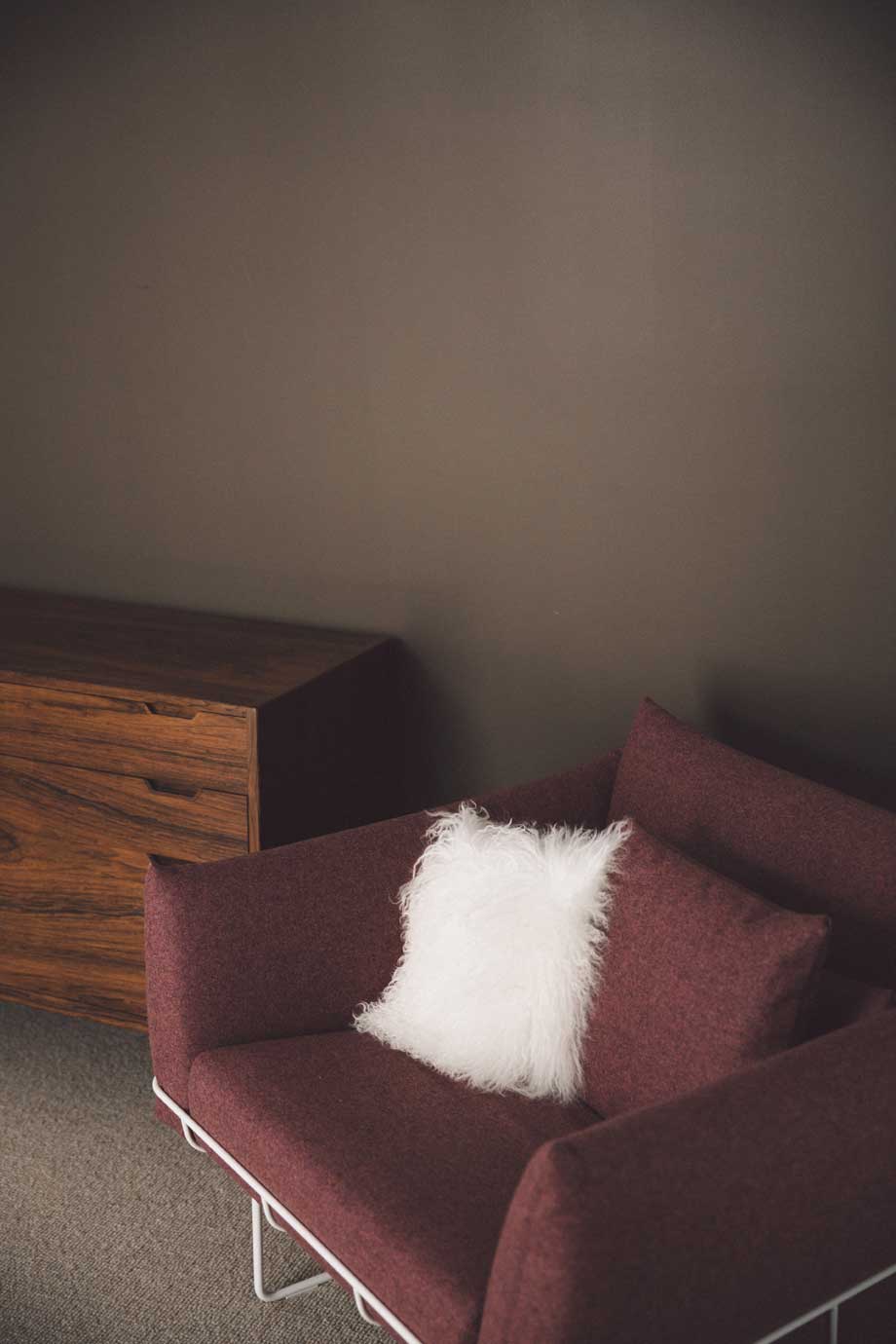Sam Grawe of Herman Miller on His New Vision for Storytelling Through Design and Journalism
sam-grawe-3
DH4A5012-min
“Nesting” is an interior-design term for when several small items fit together perfectly flush to create a greater overall effect. It’s an apt analogy for Sam Grawe’s post as global brand director at Herman Miller, the iconic, 112-year-old Zeeland, Michigan-based furniture manufacturer responsible for archetypal modern furniture pieces like the Noguchi table, the marshmallow sofa and the ubiquitous Eames Lounge Chair. Looking at Grawe’s career path, you’d think he was training for this job since childhood.While growing up in Virginia and spending time in India with his parents, he was obsessed with building, and especially with Legos. He admired architecture across the world, and he later studied art history and music composition in college. “I like to go really deep and dig into the layers of history, so I can gain insight into a work of art or music,” says Grawe, now 40. While studying, Grawe also maintained an interest in design. He fondly recalls the Dana Arts Center at his alma mater, Colgate University, designed by Brutalist architect Paul Rudolph. “I loved seeing that building every day,” he says.His obsession with furniture began as a college freshman, in the form of a poster that depicted a visual history of chairs, which he purchased during a trip to the San Francisco Museum of Modern Art.“It helped me learn the intricacies of how things flow and connect in that world,” says Grawe. “It pushed my buttons.”Design became the heart of Grawe’s career. After college, he landed a job working for designer Bruce Burdick, whose executive desks won Time Magazine’s “Ten Best Designs Award” in 1981. Next came an editorial assistant position in San Francisco at Dwell, the aspirational design and technology brand and accompanying popular magazine.Over the next 11 years, Grawe held just about every job at the magazine until he ascended to editor-in-chief in 2006, later successfully steering the magazine through the publishing slump of 2008 and 2009.“I like to think of Dwell as my post-graduate education,” says Grawe. It was there that his interest in furniture became infatuation. “Furniture is ultimately serving a need and solving a problem,” he says. “Certainly, there’s always a story behind it: the designer’s thinking. That’s the story I’m after.”“When he was editor of Dwell, Sam saw it all, met everyone and experienced the world of design fully,” says Kim Colin, who runs UK-based design group Industrial Facility with her husband Sam Hecht. “He’s always been well-respected for how he carefully commissions and creates stories.”As Grawe’s career grew, so did his ambition. He sought out a brand, Herman Miller, instead of another magazine. “I saw the tools and resources that brands have now to tell their stories,” he says. “I’d already been writing about modernism, modern furniture and modern design. It was a natural fit to bring that knowledge and those skills to Herman Miller. They have no shortage of stories to tell.”Grawe’s career, it seemed, was taking a strikingly similar path of one of his idols, George Nelson, a former architect-turned-magazine editor, who worked at titles like Architecture Forum and Fortune. He later went on to become design director at Herman Miller and eventually create some of the most iconic modern-furniture designs of the 20th century, inspiring a generation of young designers.The biggest influence on Grawe’s work was another Herman Miller alum, Nelson’s colleague and former head of the textile design division, Alexander Girard. Known for his intricate, geometric patterns, Girard also designed interior spaces throughout the Midwest.“I wouldn’t be at Herman Miller if it weren’t for Girard,” says Grawe.You’ll find Gerard’s textiles represented in Michigan’s most design-centric places: the Herman Miller “design yard,” the Marigold Lodge (an Herman Miller-owned design space)—and Grawe’s own home. To him, Girard’s work represents a golden age of modern design.In the 1950s, Girard was part of a design dream team that also included George Nelson and Charles and Ray Eames. “They were organized like a network of design knowledge, taking the best inspiration from different parts of the world to create this multicultural, global perspective,” Grawe says. It’s the model for how he runs his team today.“Connecting with that legacy was what, in part, attracted me to working at here and why I identify with the brand,” says Grawe.In 2013, Grawe connected his editorial prowess with his design passion by starting Herman Miller’s on line WHY Magazine—a magazine which approaches design with what Grawe calls a “spirit of inquiry,” telling the behind-the-scenes stories of how we learn, think and communicate through design.The perk of publishing under a storied design house with no ties to advertisers, Grawe explains, is having the resources to add critical context. “We like to make interesting, unexpected pairings in terms of an illustration or video that accompanies a story,” he says. “We have a lot of permission to experiment and try things that other magazines or publications might not.”Through decades of storytelling in the design world, Grawe has immersed himself in its history,allowing him to add great context to just about any work he comes across. This skill becomes apparent when Grawe talks about his favorite designs—many in the Midwest—in great detail.“There’s an Alexander Girard design house in Grosse Pointe, Michigan with a courtyard that has amazing glazed bricks,” Grawe explains. But it’s the historical and social context he adds that really showcases his well-rounded, near-archival understanding of the industry.“Those bricks are clearly either remnants of, or at least color tests for, the glazed bricks onthe end facades of the GM Technical Center, which is a 1956 building by Eero Saarinen. Saarinen and Girard were friends.”There’s one story he recalls most fondly of discovering great American design in the Midwest. Unsurprisingly, it began on a furniture hunt.“I found this Eames Time-Life chair on Craigslist,” says Grawe. “It was in Kalamazoo for $250.I thought, ‘What a great deal.’” Grawe drove there with his wife but couldn’t find the address. After essentially giving up, Grawe mentioned to his wife that there was a George Nelson house in the area, and he stumbled upon the Craigslist seller’s address. It happened to be the very 1950s home, designed by Nelson called the Kirkpatrick House. The owner was a longtime Herman Miller collector who’d restored the home over a ten-year period.“We did a shoot there for WHY,” says Grawe. “Meeting him was a great, providential circumstance, and we actually became friends.”These are the organic, compelling stories Grawe strives to tell, with a somewhat ulterior motive. “Ultimately the secret goal with WHY is for other magazines and websites to steal our content.” Indeed, websites like Fast Co. Design, Engadget and Design Milk have picked up Grawe’s stories. In addition to Grawe’s everyday projects, he is also working with publisher Phaidon Press on a book about Herman Miller’s 112-year history and the brand’s place in world culture. It’s set to be published in the spring of 2018. Grawe seems most content when he’s sharing stories.Lucky for him, his post at Herman Miller—the one he was seemingly destined to have—happens to be the only thing that can sate his appetite for design and storytelling, to the benefit of his readers. It’s a satisfaction reminiscent of those clean lines found in modern pieces, like when two nesting chairs stack together to perfectly align.This story originally appeared in ALIVE Issue 4, 2017. Purchase Issue 4 and become an ALIVE member.







